Aircraft noise in relation to airports is a type of noise generated by aircraft during takeoffs, landings, and maneuvers on the airport premises.
Aircraft noise in relation to airports is the type of noise generated by aircraft during takeoffs, landings and maneuvers on airport property. It is a particularly important issue due to the close proximity of airports to residential areas, which can cause negative effects on the health and quality of life of residents. In order to reduce the effects of aviation noise, various technologies and procedures for the organization of air traffic are used, and restricted use areas are created with specific technical requirements for buildings and the use of these areas.
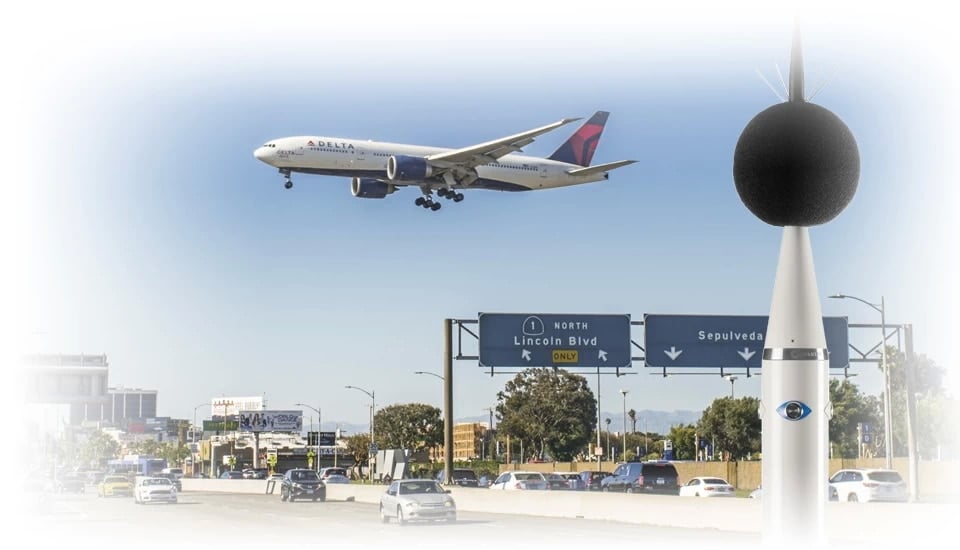
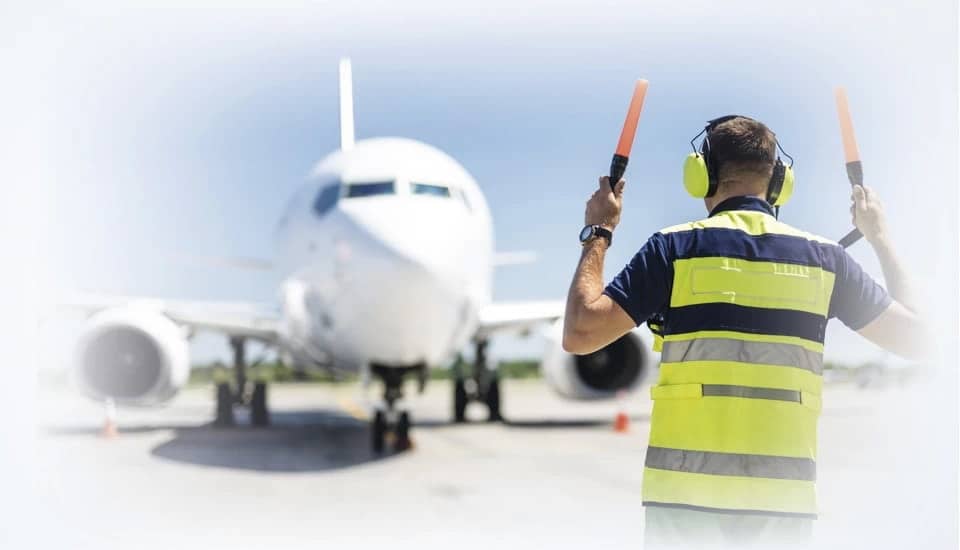
The environmental regulations require airports to carry out acoustic measurements. Such noise measurements at airports should be made every five years. In addition, the ordinance also specifies when periodic measurements should be made and when continuous monitoring is necessary. Periodic noise measurements at airports should be carried out every 5 years.
Periodic noise measurements are carried out for airports with a total of at least 5,000 takeoffs, landings and overflights per year. And continuous measurements are carried out for airports with a total of at least 50 thousand takeoffs, landings and overflights per year regardless of the location of the airport or 10 thousand takeoffs, landings and overflights per year over agglomeration areas.
In the case of continuous monitoring, the LDWN index, or long-term average sound level A in dB, is determined for all days of the year for the daytime, evening and nighttime seasons. In addition, the LN index, or long-term average sound level A, is also determined for all nights of the year. In addition, the same indicators are also determined as for periodic measurements – that is, LAeqD and LAeqN – equivalent A sound levels for specific times of the day. All these parameters are determined for single acoustic events – that is, for takeoffs, landings and overflights. In addition, these events should be separated taking into account the type of vessel and the runway symbol. For each class of events, the logarithmic mean value of the exposure level LAEk should be calculated according to the following formula:

in which:
n – the number of single acoustic events in a given class, in dB,
LAEk – the value of the exposure level for single events in a given class, in dB.
And as for the values of long-term average sound levels A, use the formula:

in which:
x – daytime, evening or night time,
T – reference time in seconds, which is 43,200 s for daytime, 14,400 s for evening, and 28,800 s for nighttime,
NK – the number of single events of a given class at the reference time,
m – the number of classes of single events.
Finally, the LDWN index is determined from the following formula:

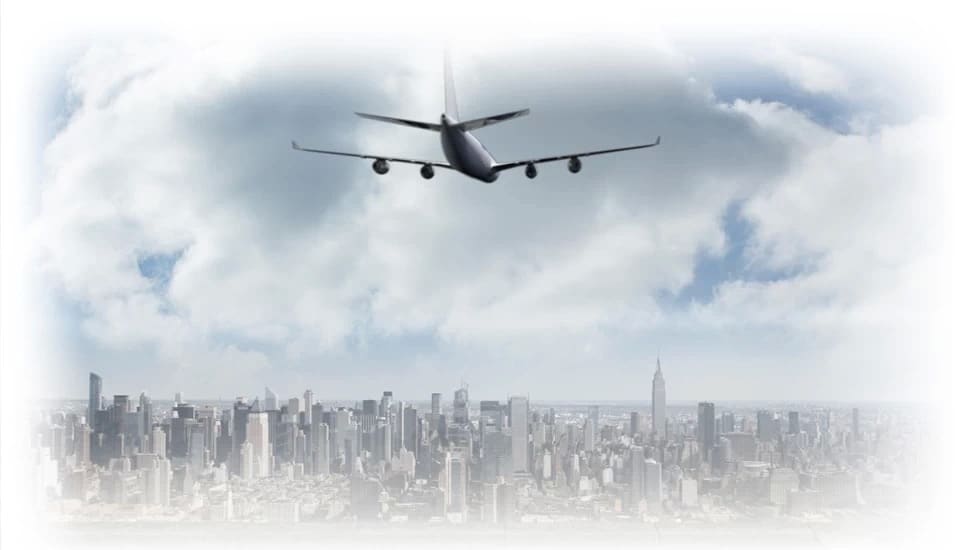
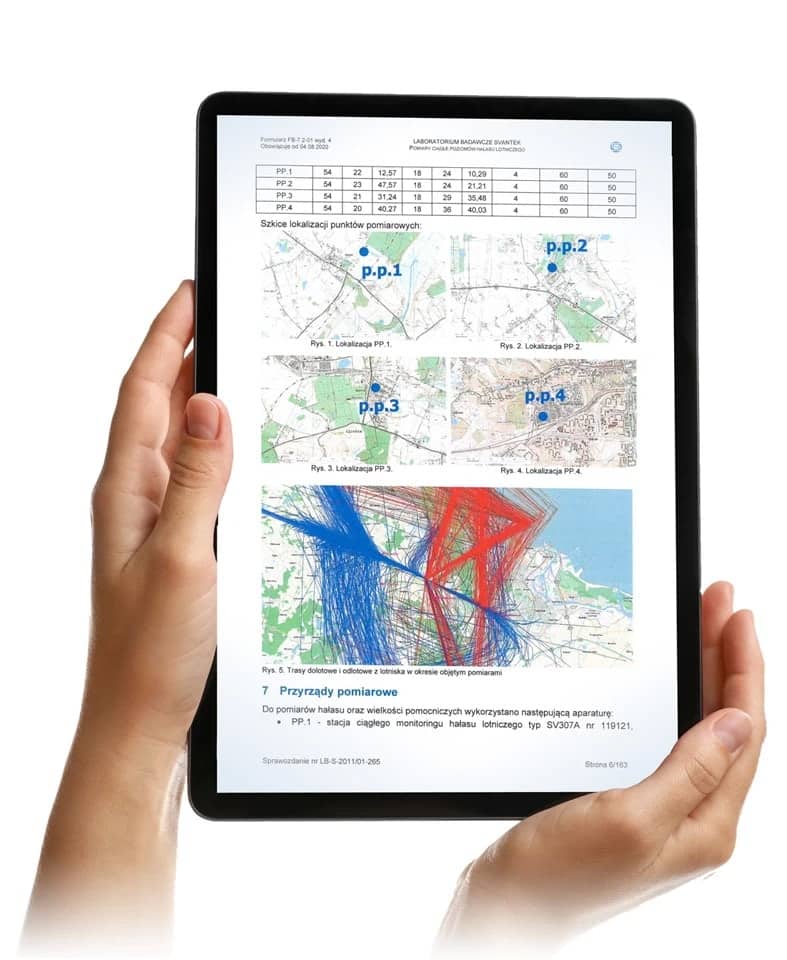
In order to properly set up measurement points for aircraft noise, it is necessary to consider the purpose of the measurements, the characteristics of the noise sources and the parameters of the area. Measurement points for periodic measurements must be located in the area covered by noise protection, and in addition must meet the following guidelines:
For continuous measurements, the measurement microphone should be positioned vertically upwards. In addition, the measurement site should be chosen so that aircraft noise can be clearly identified. The measurement should not be disturbed by other acoustic phenomena occurring in the vicinity of the sound level meter. It is important to remember to make the measurement results smaller by 3 dB when the measurement is made at the façade of a building.
For continuous measurements it is also important to distinguish between takeoffs, landings and overflights of aircraft in the area. Very good results are obtained by continuous monitoring stations with the ability to define the direction of aircraft overflights. This makes the work of analyzing the results semi-automatic.
The regulation requires that measuring instruments consist of a noise meter and a meter for meteorological conditions. The meters should be capable of determining the exposure sound level based on measurements from microphones protected from adverse weather conditions. It is also necessary for the meters to have the effect of meteorological conditions on the measurement results determined. All meters should be of Class 1 accuracy. If the equipment is used for continuous monitoring then it should also have the ability to remotely calibrate the measurement path. All SVANTEK monitoring stations are equipped with systems for measuring meteorological conditions. These systems, according to the regulation, should be located at a height of 3.5 m to 10 m above the airport level. In addition, aviation noise monitoring equipment should be calibrated within no more than 5 years.

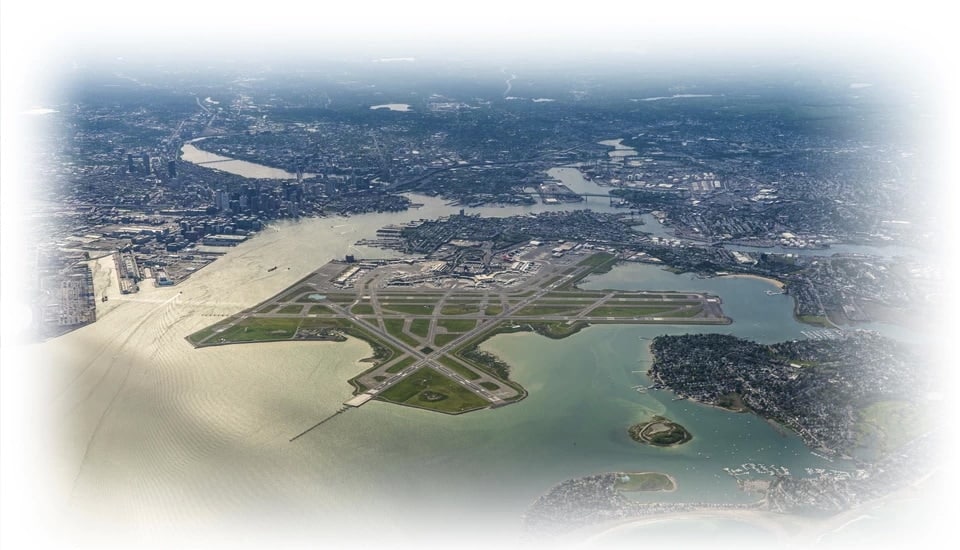
The ranges of meteorological conditions under which aviation noise should be measured are as follows: for temperature from -10 to 50 °C, for humidity from 25% to 98%, for wind speed up to 5 m/s, and for atmospheric pressure from 900 hPa to 1100 hPa. For airport noise analysis, measurements made under meteorological conditions that exceed the above ranges are rejected.
The regulation requires atmospheric condition monitoring systems to measure parameters such as wind speed and direction, temperature, relative humidity, precipitation occurrence and atmospheric pressure. In addition, it is also necessary to quantify the number of flight operations at each runway program – meaning the type of operation and type of aircraft.
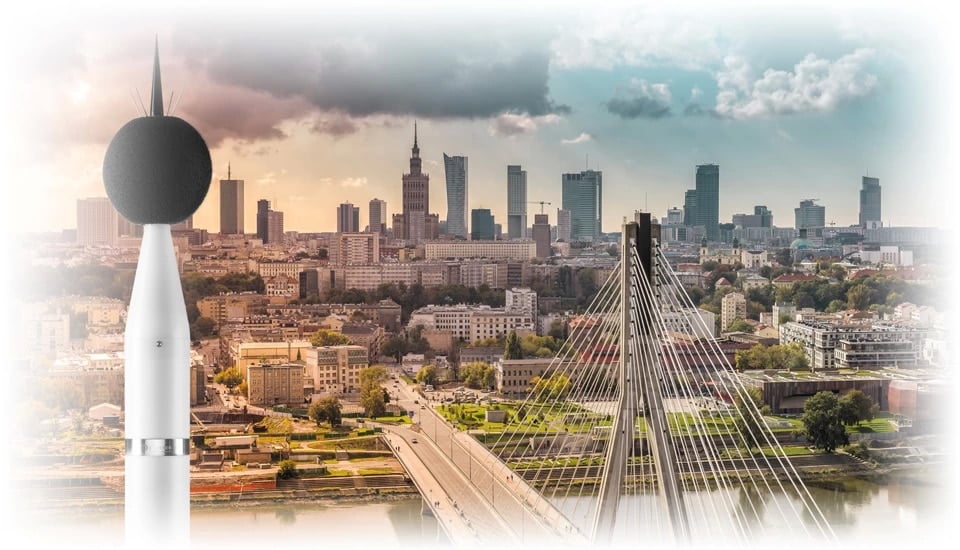
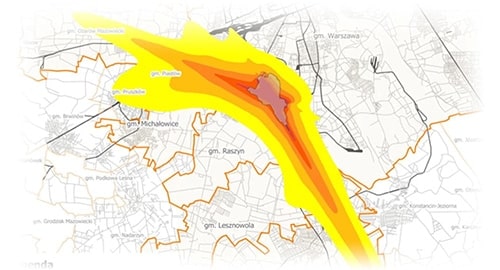
The regulation also includes information and guidelines for estimating the uncertainties of the measurements taken. Estimating uncertainty requires technical knowledge in the field of acoustics. Uncertainty should be estimated at a 95% confidence level, and the expanded uncertainty interval must be less than 3 dB to consider the measurement results accurate.
Continuous measurement results should be collected in monthly and annual reports for the calendar year. Monthly reports should include information on the airport manager, its location, who conducted the measurements, and during what period. Additionally, the type of aircraft measured, the measurement equipment used, the terrain characteristics where the measurements were taken, and the location of the measurement points should be specified. The report should also include measurement data related to meteorological parameters and exposure level measurements with precise information on the type of flight. The annual report should include the same information, as well as a map indicating the location of runways and measurement points, as well as measurement results.
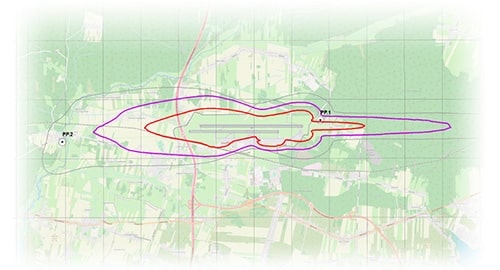
Periodic measurements can be taken using either a measurement or a calculation method. The calculation method should be used when it is not possible to take measurements. In this case, the INM calculation method is used, which is in accordance with international regulations Circular 205 – AN/1/25/1998 and ECAC CEAC Doc. 29 Report on Standard Method of Computing Noise Countours around Civil Airports.
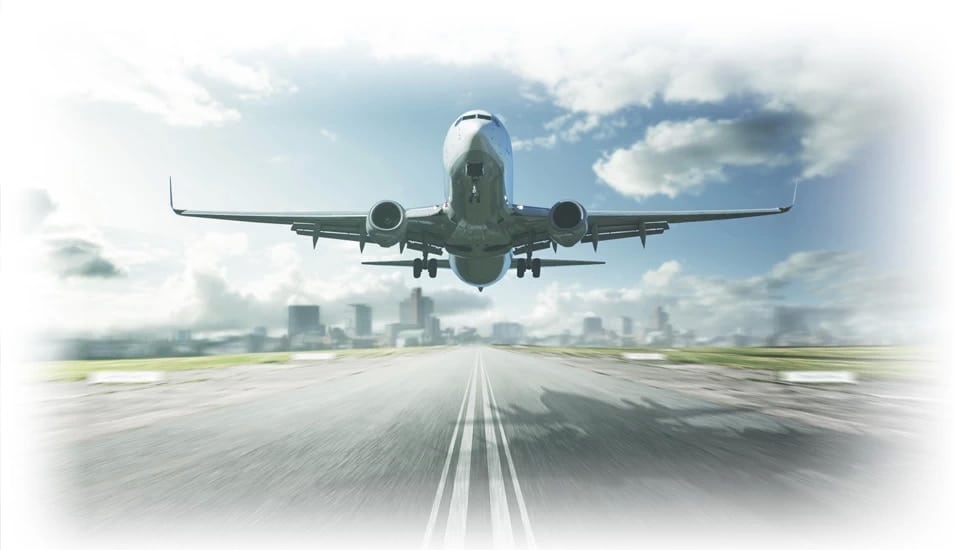
It is necessary to determine the LAeqD and LAeqN indicators, which are the A-weighted equivalent sound level in dB for the appropriate times of day. These indicators can be determined through measurement or calculation. Based on these indicators, the LDWN or the long-term average A-weighted sound level determined for all days of the year, taking into account the appropriate times of day, or the LN or the long-term average A-weighted sound level determined for all night times of the year can be determined. For periodic measurements, the exposure level is measured for each aviation operation, but without considering classes. Then, the LAEsr or the average sound exposure level is determined according to the formula.

Where:
k – the current number of aviation operations.
In this case, the uncertainty interval is estimated by calculating the standard deviation.
Based on these values, the A-weighted equivalent sound levels for the daytime and nighttime periods are determined using the following formulas:
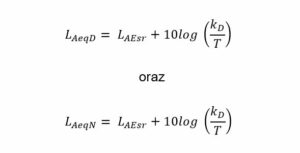
where:
kD and kN – the number of individual events during the appropriate period,
T – the reference time for the appropriate period in seconds.
Verification of determined aircraft noise ranges
If we are conducting periodic measurements to verify the determined range of aircraft noise in the form of a constant sound level line value of LAeqD, we should modify it according to the following formulas:
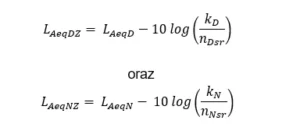
where:
nDsr – the annual average number of individual events during the daytime period,
nNsr – the annual average number of individual events during the nighttime period,
kD – the number of individual events during the daytime period,
kN – the number of individual events during the nighttime period.
We conduct continuous measurements in the form of fixed monitoring at airports such as Warsaw Babice, Warsaw-Modlin, Katowice-Pyrzowice, Gdańsk-Rębiechowo, and Lublin-Świdnik. We prepare monthly and annual reports for these airports. In our reports, aircraft types are presented using ICAO codes. Airports covered by continuous monitoring are serviced by at least two SV 307 or SV 200 monitoring stations. The reports contain extensive data from each measurement taken, as well as information on which measurements were taken in unfavorable meteorological conditions. We also determine A-weighted equal sound level curves for each airport in graphical form.
